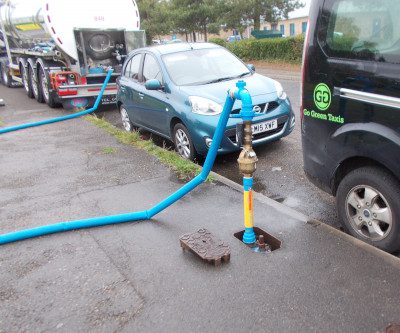
Ofwat has published its PR24 final methodology and expectations around leakage and water consumption are predictably high. Implemented now, smart technology can help get data in order for upcoming business plans, says Kevin Brook.
Innovation will be key to water companies hitting future targets and delivering against new expectations, says Ofwat in its price review 2024 (PR24) final methodology, published 13 December 2022.
The regulator tells water companies in England and Wales that it will reward ambitious plans for the 2025-2030 operational period. With leakage, for example, it says “companies will be rewarded if they can set and deliver aggressive reductions. We expect companies to embrace the opportunities to improve performance through smart technology and better use of data”.
The long-term challenge of ensuring sufficient water resources is a key element of Ofwat’s methodology framework, including through the reduction of leakage and water consumption.
While data-driven real-time monitoring has kick-started the water sector’s smart transformation, with leakage performance being just one area to have improved as a result, companies will need to be bolder and move faster to put themselves in the best possible position ahead of the next price review.
With both leakage and per capita consumption, there are some quick wins available to enable utilities to get their data in order, close reporting gaps and help inform business plans. Smart standpipes, for example, allow more precise monitoring of water supply networks.
By calculating in real-time the exact volume of water being extracted from the network by third parties who have hired the devices, utilities can assign consumption to an authorised user, such as a local authority or construction company. Orbis’s unique SmartStandpipe have a built-in multi-sensor that measures water extractions and pipeline flow data, provides GPS location data and records the time the water was taken.
Traditional standpipes are not equipped with this smart capability, meaning this usage – measured by Orbis as up to 20ml per day during periods of 2022 – may go unaccounted for and possibly incorrectly attributed to leakage. This insight may similarly have a positive impact on per capita consumption targets, if any of the significant volumes abstracted by third parties were previously attributed to domestic households.

Smart standpipes also enable water companies to factor their own operational teams’ usage into their calculations, through everyday activities such as mains flushing, giving a far more accurate picture of what is happening right across the network – including pinpointing illegal network abstraction, from non-authorised users.
With more stretching targets fast approaching, alongside the major long-term challenges of water scarcity, drought and growing populations, utilities are looking at how they can deliver improvements and build resilience quickly and cost effectively. Investing in smart systems not only allows for proactive network management – meaning better targeted maintenance programmes, reducing the risk of bursts, service interruptions and discolouration – it now enables water companies to measure usage that was once unaccounted for.
While once those gaps in reporting may have been considered too small to matter, they now do – but thanks to the availability of advanced technology such as smart standpipes, companies have the tools to close the gaps quickly and build a complete picture of network activity to present to regulators.







